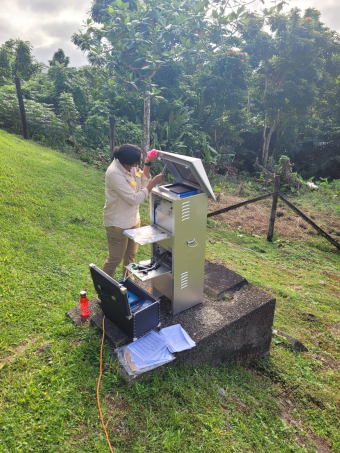Why are we doing this research?
An increasingly populated and industrialised world has inevitably led to a decrease in air quality across a number of regions, raising concerns about the harmful effects of air pollution on human health. As noted by a number of health and environmental organisations, respiratory illness is on the rise in Pacific populations. However, existing research has been largely concentrated in high-income countries, leaving an absence of information on the global south.
This research partnership with Pasifika partners aims to utilise empirical air pollution data in order to improve the health outcomes of Pacific communities. The data will support government partnerships with multilateral agencies and universities that will improve air quality through investment in renewable energy. Women and children from lower-income households are the most vulnerable to the negative impacts of poor air quality, and a gendered and demographical approach will be taken to extend this research to identify those most at risk.
How will this research make an impact?
Ultimately, the research aims to:
- Work with in-country University and Government partners to collaboratively build an air quality monitoring and sampling network.
- Complement existing in-country capacity and UNSW field equipment currently measuring airborne pollution concentration.
- Work with Pacific Island Countries and Territories’ (PICT) federal ministries to gather empirical data which will assist in addressing the increasing respiratory disease burden and hasten energy transition.
- Allow for the first-ever inter-country comparison of air quality in the Pacific, providing regional strength to requests for multilateral support.
- Improve air quality for people in low and middle-income PICTs.
How is this research funded?
Technology deployed through an Australian Human Rights Institute seed funding grant is being used to complement existing in-kind collaboration that monitors airborne particle concentration in-situ, allowing air particles to be captured for laboratory analysis. The technology will be deployed in Sydney (Australia), Honiara (Soloman Islands), Suva (Fiji) and Nuku’alofa (Tonga). Such data will allow researchers to differentiate the source and health risks of air pollution in the Pacific region, with particular attention to urban versus peri-urban areas and indoor versus outdoor exposure.
In 2019, the IGD Small Funding Scheme assisted the research team in purchasing field equipment and travel costs for two PICT representatives to attend a training workshop in Sydney. This workshop allowed the representatives to learn about the theory and practical implementation of the equipment. The equipment was then taken by the participants to their respective countries, where it was to be installed and utilised.
Who we are
Research team:
- Dr Andrew Dansie, Civil and Environmental Engineering, UNSW
- Jimmy Jaghoro Hilly, research student, Civil and Environmental Engineering, UNSW and Solomon Islands Ministry of Health and Medical Services
- Khadija Al Nabhani, research student, Civil and Environmental Engineering, UNSW
